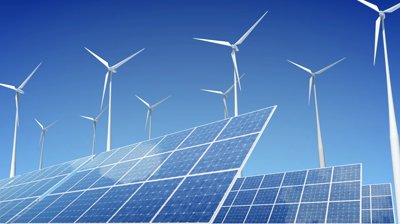Want to minimize radiation from power generation – build more nuclear
But now a study has been done that shows that of most of the options to generate electricity, nuclear actually releases the least amount of radiation. This is documented in UNSCEAR’s, the United Nations Scientific Committee on the Effects of Atomic Radiation, most recent report to the United Nations General Assembly, on its study to consider the amount of radiation released from the life cycle of different types of electricity generation.
The Committee conducted the comparative study by investigating sources of exposure related to radiation discharges from electricity-generating technologies based on nuclear power; the combustion of coal, natural gas, oil and biofuels; and geothermal, wind and solar power. The results may surprise some, especially those that strongly believe that nuclear pollutes the earth with radiation, coal with a range of air pollutants and carbon, and that solar and wind are environmentally wonderful.
Coal generation resulted in the highest collective doses to the public, both in total and per unit energy. Coal radiation emissions result from coal mining, combustion of coal at power plants and coal ash deposits. The study also considered occupational doses to workers. Here is the biggest surprise. As stated “With regard to the construction phase of the electricity-generating technologies, by far the largest collective dose to workers per unit of electricity generated was found in the solar power cycle, followed by the wind power cycle. The reason for this is that these technologies require large amounts of rare earth metals, and the mining of low-grade ore exposes workers to natural radionuclides during mining.” It is important to note that in all cases these levels of exposure are relatively low and have little impact to public health.
This study only addresses normal discharges during the lifecycle of the station. Possible larger releases as a result of nuclear accidents are not considered and we recognize that many will argue it is accidents and their consequences that create the largest fear of nuclear power.
So why talk about this? The reality is that this information is not likely to change even one single mind on whether someone supports nuclear power or fears it. We live in a world where facts no longer matter – the only truth is the one that any one person believes. Well, we believe that scientific study remains the best way forward to establish truth and that studies such as these are part of the path forward. No one electricity generation technology is perfect. Coal is cost effective and technically strong, but is also a strong emitter of a range of pollutants (including radiation); renewables such as solar and wind are clean but their resource is intermittent and they have issues with both their front end (mining of rare earths) and disposal at the end of their life cycle.
Nuclear power continues to have a good story to tell, with respect to its economics, reliability, environmental attributes and the many good jobs it creates for local economies. Concerns about nuclear relate mostly to one major issue – fear of radiation. And fear is a strong emotion that is not easily changed. But at least what we have here is another study to show that radiation emissions from normal operations of the nuclear fuel cycle is not something to fear – and in fact if you really want to minimize the collective dose to the public, nuclear power remains the option of choice.






5 Comments
Robert Hargraves · November 28, 2016 at 6:32 am
The ionizing radiation from all these sources is biologically trivial.
http://www.columbia.edu/~jeh1/mailings/2014/NuclearRadiationSafety.2014.pdf
Jerry Cuttler · November 28, 2016 at 3:13 pm
We should not be trying to minimize radiation from power generation, or from any other source. From a health point of view, humans are underexposed to ionizing radiation. The problem is: Antinuclear scientists and the radiation protection establishment have linked any small radiation exposure to an increased risk of fatal cancer. This idea is false, and it must be rejected by everyone. Nuclear energy must not be linked to a risk of cancer.
I recommend the book by Wade Allison, “Nuclear is for Life”, Available at: https://www.amazon.com/Nuclear-Life-Revolution-Wade-Allison/dp/0956275648
Steve Aplin · November 29, 2016 at 1:15 pm
very interesting article Milt, I did know about the rare earths used for solar panel manufacturing but hadn’t considered the radiological implications of mining them.
But I’m with Jerry — there is a lot of evidence suggesting the low exposure levels in the activities you describe are not only not harmful but beneficial.
I guess it’s like water: ingesting 1 ml per day is too little, 0.05 kl is (way) too much, and something on the order of 1-2 litres is just right.
rennie caplan · November 30, 2016 at 4:21 pm
learned a lot from this blog
thank you
Want to Minimize Radiation from Power Generation? Build More Nuclear – Enjeux énergies et environnement · November 28, 2016 at 1:08 pm
[…] Original Post […]
Comments are closed.